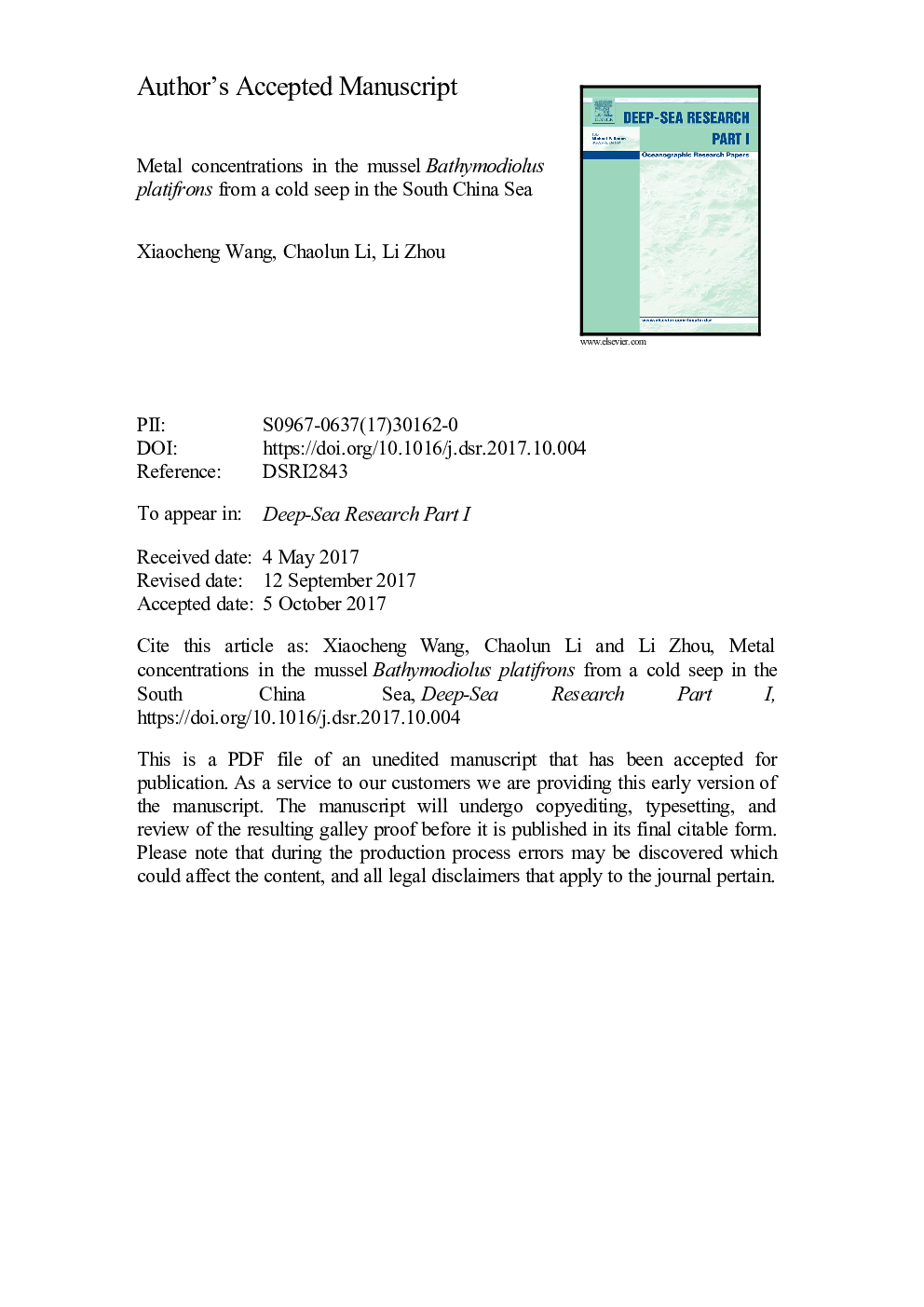| Article ID | Journal | Published Year | Pages | File Type |
|---|---|---|---|---|
| 8884326 | Deep Sea Research Part I: Oceanographic Research Papers | 2017 | 20 Pages |
Abstract
Data regarding the concentration and distribution of various metals in different tissues of mussels from the cold seep is scant. We aimed to quantify the presence of twenty elements (Ca, K, Mg, Sr, Ag, Al, As, Ba, Cd, Co, Cr, Cu, Li, Fe, Mn, Mo, Ni, Pb, V, and Zn) in gills, mantles and shells of Bathymodiolus platifrons, a common mussel species in deep-sea cold seep and hydrothermal vent communities. Specimens of B. platifrons were sampled from a cold seep at the northern continental slope of the South China Sea and the elemental contents in its tissues were quantified. Our findings were compared to data from taxonomically similar species at hydrothermal vents and coastal waters. We found that most elements were significantly enriched in the gills, which could be related to food uptake and the existence of endosymbionts. In shells and mantles, Mn was particularly rich, possibly due to its replacement of Ca in the carbonate structure. A significant positive correlation among Ca, Sr, and Mg was found in both gills and mantles, consistent with relationships observed in vent and littoral mussel species. Concentrations of metals were highest in the new-growth outer edges of shells in comparison to older shell material, which suggests that trace metals have become more abundant in the ambient seawater in recent years. Compared with other deep-sea environments and coastal areas, metal accumulation showed local variability but similar overall patterns of uptake and accumulation, indicating that essential elemental requirements in different mussel species may be similar across taxa. The high bioconcentration factor (BCF) values of Mn and Ag suggest that their particular functions and regulation mechanisms are related to specific adaptations and life cycle processes.
Related Topics
Physical Sciences and Engineering
Earth and Planetary Sciences
Geology
Authors
Xiaocheng Wang, Chaolun Li, Li Zhou,
